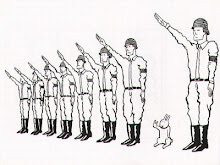Within this sex/gender division of labor, women's work is systematically valued less, which reinforces women's lower economic status in both developed and less-developed countries. In the United States, on average women earn 70% or less of what men earn at most educational levels. This gender pay gap has closed since the 1960s, when it was closer to 60%; however, the closing of the gap is due to a decrease in men's average wages since the 1970s due to deindustrialization, corporate, downsizing, and fluctuating patterns of economic growth. A staggering 80 percent of the 53.7 million women in the American workforce continue to make $25,000 or less a year. That is a cold $10,000 less than the average man makes. Worldwide women perform an estimated 60 percent of the work, yet earn only 10 percent of the income and own only 10 percent of the land. When we talk about sweatshop labor, we're talking predominantly about the labor of young adolescent women.
There have been numerous experiments in which two groups of people rate things such as a set of articles, pictures of works of art, a set of resumes. The names of the authors are changed for each group. Those items for the first group which have men’s names, have women’s names for the second group, and those items with women’s names for the first group have men’s names for the second group. In other words, the gender of the author is reversed for each group. The results of these studies are remarkably consistent: articles that have a male name attached to them get higher ratings than when the same article has a woman’s name. Both men and women do this: they devalue those items ascribed to females. Studies of how women’s success is perceived show a similar pattern: men’s success is attributed to talent; women’s success is attributed to luck or affirmative action.
It has been my experience that women work harder for their money.


0 Comments:
Post a Comment
<< Home